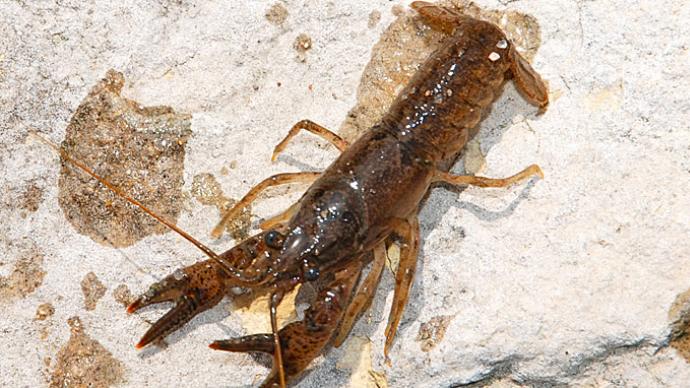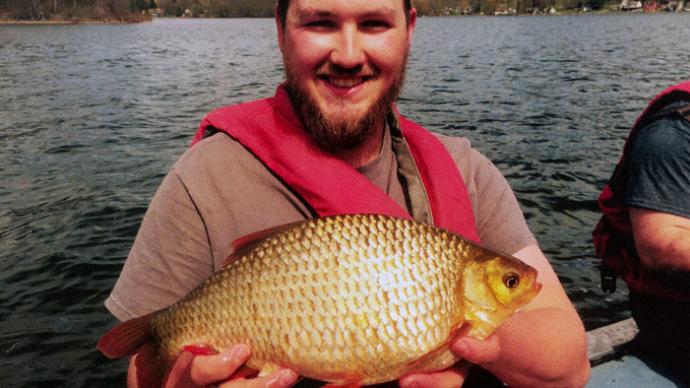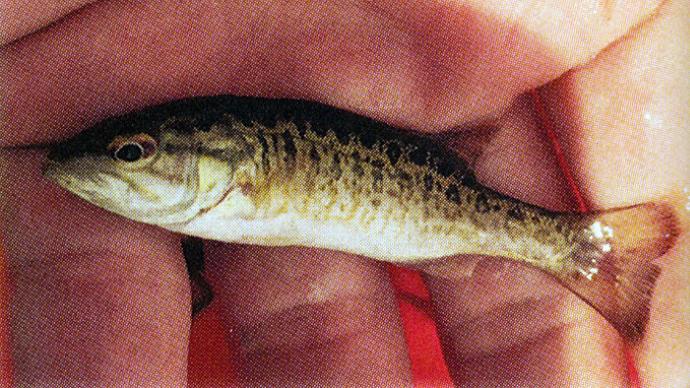
Lately, there has been significant discussion on the forums about the effects of crawfish. "Are crawfish a good food source for fish, what effect will they have (on both plants and fish), and will they establish a sustaining population?" are some of the questions. However, one question was not asked until late in the discussion: "What effect crawfish would have on Bluegill and Bass (Smallmouth and Largemouth) reproduction." As is usually the case, the answer is, "It depends."
Fish eat crawfish, and crawfish eat fish. Crawfish eat plants and invertebrates and pelleted fish food once it sinks to the bottom. Notably, but not usually considered, there are hundreds of species of crawfish, and they are not all equal regarding these questions. While this article focuses on crawfish's effect on Bluegill and Bass reproduction via egg predation (until the bass eats the crawfish), there is a wide range of things to consider. For example, crawfish density is critical. What is a plus in small numbers can be a disaster at high density. In one study in Wisconsin in a crawfish-crowded lake, trapping had minor effects on the young-of-the-year crawfish. Still, in 1986, after some adult Largemouth Bass were added, the crawfish population was reduced by 98%, with largemouth bass predation as the likely cause of the reduction.
However, on the other end of the spectrum, another study noted the presence of 0. Virilis (a common crawfish species) in small experimental ponds at high densities could result in total reproductive failure by bluegill due to egg predation.
We should start by realizing that numerous events/causes can create threats to Bluegill and Bass reproduction. In Conflicting Natural and Anthropogenic Threats Reduce Nest Success in Centrarchid Fishes, Stephen M.Selego, George T. Merovich Jr., and James T.Anderson writing in Hydrobiologia 2014 noted that for predicting nesting success: nesting date (weather/ temperature), male body size, distance to nearest other centrarchid nests, distance to nearest cover objects, distance to shore, distance to deep-water, water depth, water movement, canopy cover, the proportion of silt and clay around the nest, proportion of sand around the nest, proportion of gravel around the nest, proportion of cobble around the nest, the proportion of silt and clay in the nest, and proportion of gravel in the nest were all possible environmental factors.
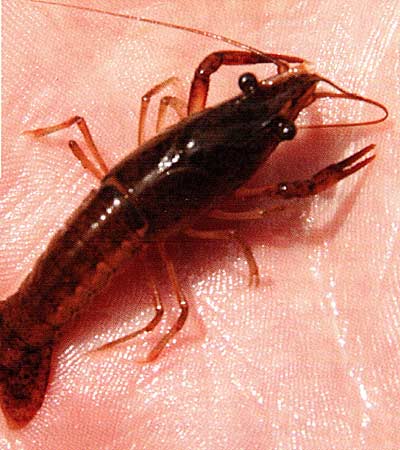
Further, other factors, including fish aggression and behaviors, impacted reproductive success—one being selecting nest sites near cover. The authors and others believe the consequences of nesting near cover correlate with the high crawfish predation on fish eggs when crawfish densities are high.
More to the point, another study, Effects of a Native Crayfish (Orconectes Virilis) on the Reproductive Success and Nesting Behavior of Sunfish (Lepomis spp.) by Nathan J. Dorn and Gary G. Mittelbach in Can. J. Fish. Aquat. Sci. Vol. 61.2004 describes in detail the effects of crawfish on Bluegill and Pumpkinseed (two substrate-nesting sunfish). As noted earlier, crawfish are traditionally considered fish prey, but they are highly capable of feeding on substrate-bound fish eggs. As a result, crawfish introductions have been blamed for the decline in fish populations in Europe and North America. The study investigated the potential effects of fish reproductive success by a native crawfish (0. Virilis) on the reproductive success of two substrate-nesting sunfish, Pumpkinseed and Bluegill.
In the replicate studies, crawfish were observed feeding on eggs in both experiments. Crawfish presence delayed successful reproduction by pumpkinseeds in densely vegetated ponds, resulting in lower young-of-the-year biomass in ponds with crawfish. In the second experiment, crawfish prevented successful reproduction entirely with bluegills in less-vegetated ponds. Interestingly, when crawfish-proof enclosures were added to the ponds, bluegills located the crawfish-free habitat and successfully reproduced inside the enclosures.
When Bass (Largemouth and Smallmouth), also substrate-nesting sunfish, were studied for the effects of crawfish predation, the results differed. While in very high-density crawfish locations, bass reproduction was sometimes significantly reduced. In more "normal" numbers, native crawfish predation was manageable, not affecting bass reproduction. One might ask, why? Common sense reminds us the average parental male largemouth or smallmouth bass is approximately 2.5 times longer and 7 times heavier than the average parental male bluegill or pumpkinseed. Because all these fish nest in the littoral zone of the same bodies of water and thus confront the same array of potential nest predators, larger species should face lower risks of nest predation because they should have a better capacity to defend the nest. However, because nests of larger species provide more prosperous foraging opportunities to predators because of greater biomass of eggs or fry, larger species may experience a higher risk of nest predation than smaller species, despite their size. While possible, we should remember that bass love to eat crawfish, and they are richly present in the stomachs of nesting bass. So, while crawfish may want a bigger meal from bass nests, they probably are aware of the risk, as aware as a cold-blooded crustacean can be.
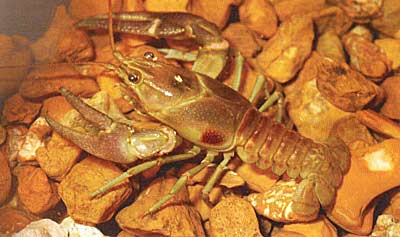
Crawfish species do make a significant difference. Beware of the Rusty Crawfish. Invasive Crayfish Orconectes Rusdcus (Decapoda. Cambaridae) Is a More Effective Predator of Substrate Nesting Fish Eggs Than Native Crayfish (0. Virilis) by Joshua W. Morse, A. K. Baldridge and L. W. Sargent in Crustaceana 86 (4) 387-402 reveals the difference between the above noted Rusty Crawfish and 0. Virilis in the prior studies. The Rusty Crawfish, an invasive crawfish, represents a significant concern to biologists and managers as negatively affecting community structure and ecosystem function in the United States and worldwide.
Orconectes rusdcus, the Rusty crawfish displays more aggressive behavior than its native cousin 0. virilis, and outcompetes it in most lakes where both species occur. Rusty Crawfish are aggressively clear-cut submerged vegetation and consume aquatic macroinvertebrates, reducing the abundance and diversity of both. These behaviors indirectly affect juvenile fish by reducing nursery habitat and food resources. In addition, they are voracious predators of fish eggs, directly affecting reproduction. This study demonstrated that size correlates positively with feeding rate in Rusty Crawfish and that they consume bluegill eggs more rapidly and aggressively than 0. virilis of comparable size.
The interrelationship of all facets of pond life is a fascinating maze of beauty, but there is much we don't know. Unfortunately, many facets are not easily seen through the lens of common sense. Further, these interrelationships are different from pond to pond.
Reprinted with permission from Pond Boss Magazine

